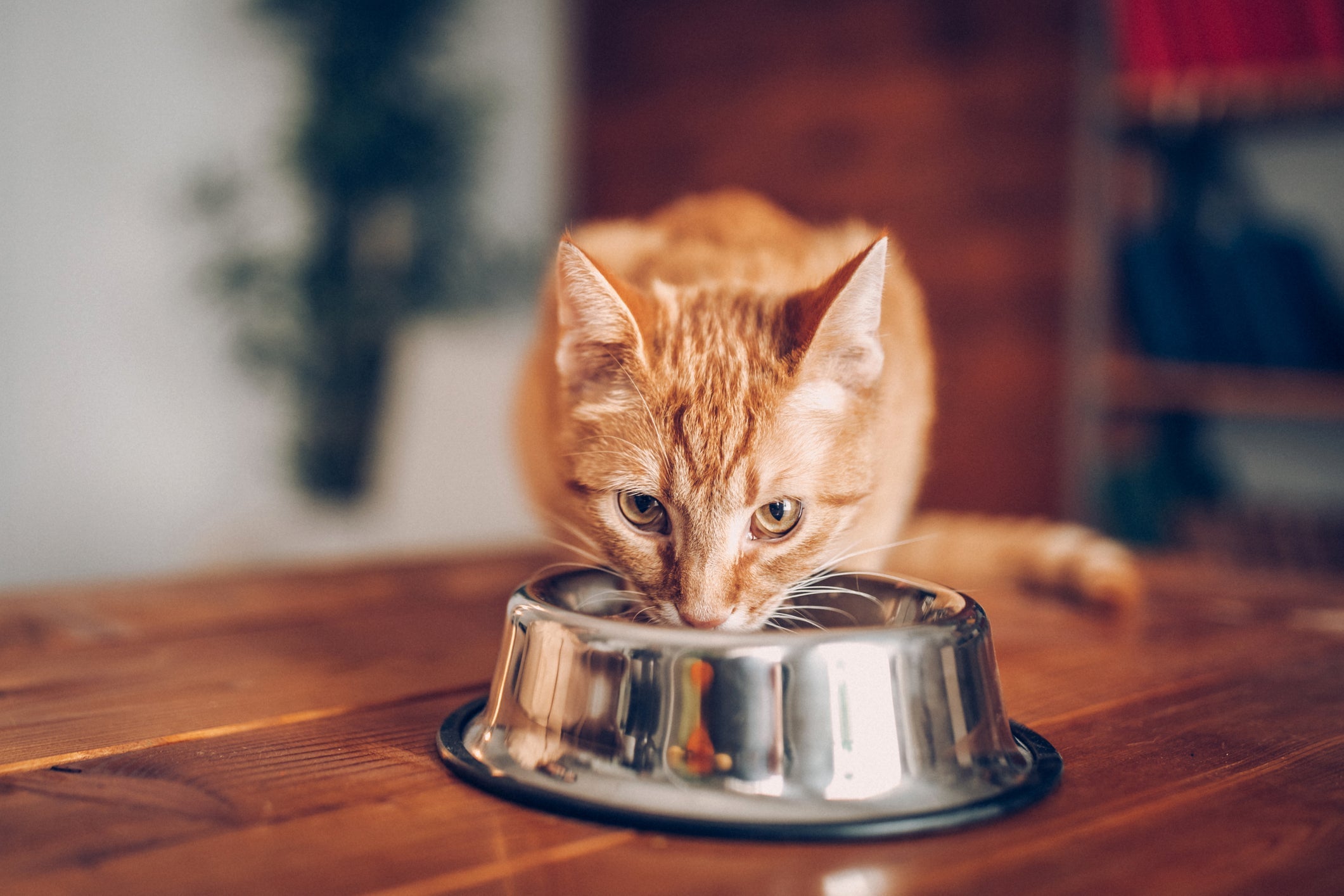How Much to Feed Your Cat at Every Life Stage (Plus the Power of Probiotics!)

Cats are notoriously picky eaters, and their nutritional needs are anything but simple. Cats need tailored feeding at every life stage to keep them healthy, happy, and energized.
In this guide, we’ll explore how much to feed your cat through each life stage and how probiotics can support their digestive health and overall well-being.
Key Takeaways
-
Always consult your vet for customized feeding advice.
-
Use a measuring cup or food scale to avoid overfeeding.
-
Transition foods gradually over 7–10 days to prevent tummy troubles.
-
Watch for changes in weight, coat, stool, or appetite as cues to adjust. Check out our guide here on how to tell if your cat is sick.
- Got a new kitten? Here's a first time cat owner guide for a happy start.
Kitten (0–12 months): The Growth Phase
How Much to Feed
Kittens need more calories and nutrients per pound of body weight than adult cats. They’re growing rapidly, and burn through their energy.
-
Frequency: 3–4 meals per day (until ~6 months)
-
Food Type: Specially formulated kitten food. Make sure it is high in protein, fat, and DHA!
-
Serving Size: Varies by brand, but ~60–90 kcal/lb/day is typical
As your kitten approaches 6–12 months, you can gradually shift to twice a day feedings and transition to adult food by their first birthday.
Probiotic Support
Kittens are especially vulnerable to digestive upset as their microbiomes are still developing. Probiotic supplements during weaning or transitions (e.g., changing food or environment) can:
-
Reduce diarrhea and GI distress
-
Strengthen immune defenses
-
Improve nutrient absorption
Look for probiotics tailored for kittens. They are often paired with prebiotics to help nourish good bacteria. Check out our guide about probiotics for cats.
As always, check with your veterinarian if you are unsure!
Adult (1–7 years): Maintenance & Muscle
How Much to Feed
Once your cat hits adulthood, the goal is maintenance: supporting ideal weight, lean muscle, and healthy metabolism.
-
Frequency: 2 meals per day
-
Food Type: High-quality adult cat food (wet or dry)
-
Serving Size: 20–30 kcal/lb/day, depending on activity level and body condition
Keep an eye on portion control. Obesity is a leading health issue in adult cats, especially indoor ones.
Probiotic Support
Even healthy adult cats benefit from daily probiotic support:
-
Helps regulate digestion (especially in picky eaters or dry food diets)
-
Reduces hairball formation
-
Supports immune system and skin/coat health
BOXIE TIP: A litter infused with probiotics, like BoxiePro Probiotic Clumping Cat Litter, can offer extra benefits by creating a cleaner litter box environment and help to reduce stress for your cats.
Senior (7+ years): Support & Sensitivity
How Much to Feed
Older cats often become less active and may develop medical or dental issues that influence appetite and nutrient absorption.
-
Frequency: 2+ smaller meals per day to prevent weight loss or GI issues
-
Food Type: Senior formulas with enhanced joint support, lower calories, and softer textures
-
Serving Size: 20–25 kcal/lb/day, often less due to reduced activity
Some seniors may need prescription diets based on kidney, thyroid, or dental conditions. Check in with your veterinarian if you’re not sure!
Probiotic Support
Aging cats experience changes in gut flora and are more susceptible to digestive issues, such as constipation or diarrhea. Probiotics can:
-
Help maintain regularity and stool quality
-
Counteract medication side effects (e.g., antibiotics, steroids)
-
Improve appetite and digestion
Bonus: Probiotics may even reduce inflammation and support cognitive function in older cats.
Feeding Chart
| Life Stage | Feeding Frequency | Calories per lb/day | Food Type | Probiotic Benefits |
|---|---|---|---|---|
| Kitten | 3–4 meals/day (until ~6mo) | 60–90 kcal | Kitten-specific, high in protein, fat & DHA | Builds gut health, reduces GI issues, strengthens immunity during growth |
| Adult | 2 meals/day | 20–30 kcal | High-quality adult cat food (wet or dry) | Regulates digestion, reduces hairballs, supports immune and skin/coat health |
| Senior | 2–3 smaller meals/day | 20–25 kcal | Senior formulas: softer texture, joint support | Eases digestion, improves appetite, supports regularity and cognitive function |
FAQ
How much should I feed my cat at different ages?
It depends on their age and lifestyle!
-
Kittens are growing fast and need to eat 3–4 times a day. Look for kitten-specific food that’s high in protein, fat, and DHA. They need 60–90 calories per pound of body weight.
-
Adult cats need around 20–30 calories per pound and typically do well on two meals a day.
-
Seniors may need smaller, more frequent meals at 2–3 per day and fewer calories (around 20–25 per pound), especially if they’re less active.
Keep an eye on their weight, energy, and appetite and always check in with your veterinarian if you’re unsure.
Do cats really need probiotics?
Yep! Probiotics aren’t just a human thing. They help your cat’s digestive system stay balanced and healthy at every age.
-
For kittens, probiotics support their gut and can reduce tummy troubles during transitions like weaning.
-
For adults, they can help with picky appetites, hairballs, and even boost immunity.
-
For senior cats, probiotics may ease constipation and support digestion.
You can find probiotics in supplements and food toppers to help support your cat’s digestive health. Litters like BoxiePro include probiotics that help keep the litter box (and your home!) clean and fresh.
What’s the best way to switch my cat’s food without upsetting their stomach?
Slow and steady wins the race! When changing your cat’s food make the transition over 7–10 days.
Start by mixing a small amount of the new food with their current food, gradually increasing the new food each day. This helps avoid upset tummies and diarrhea.
Always use a measuring cup or food scale to avoid overfeeding, and watch for changes in weight, coat, or stool to make sure your cat’s doing well.



